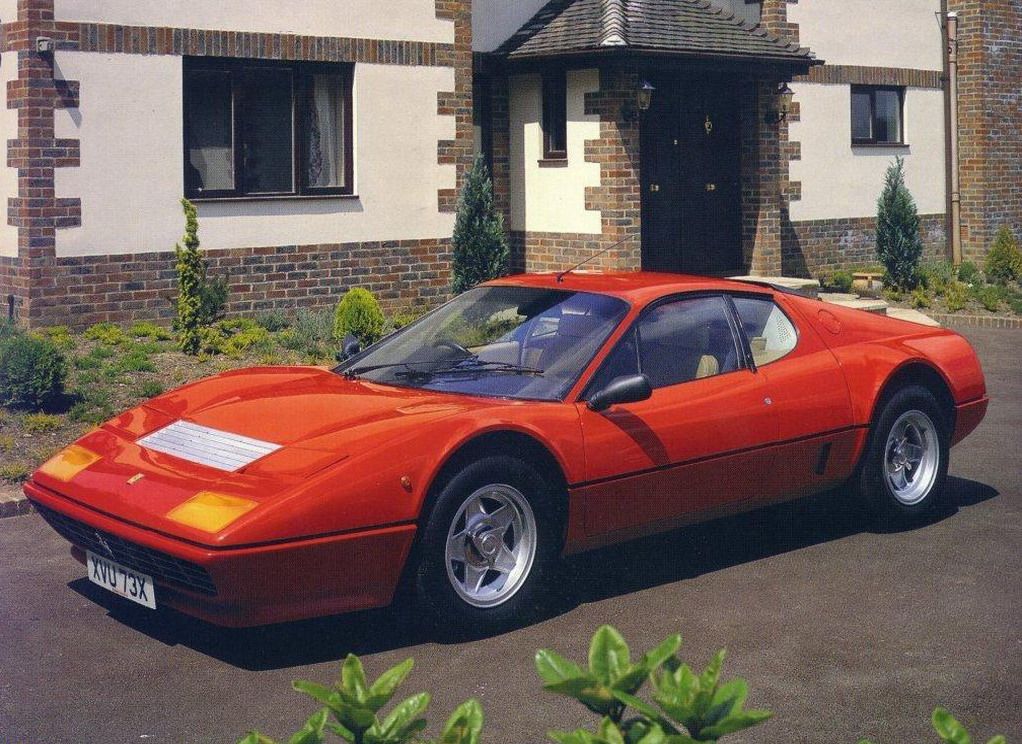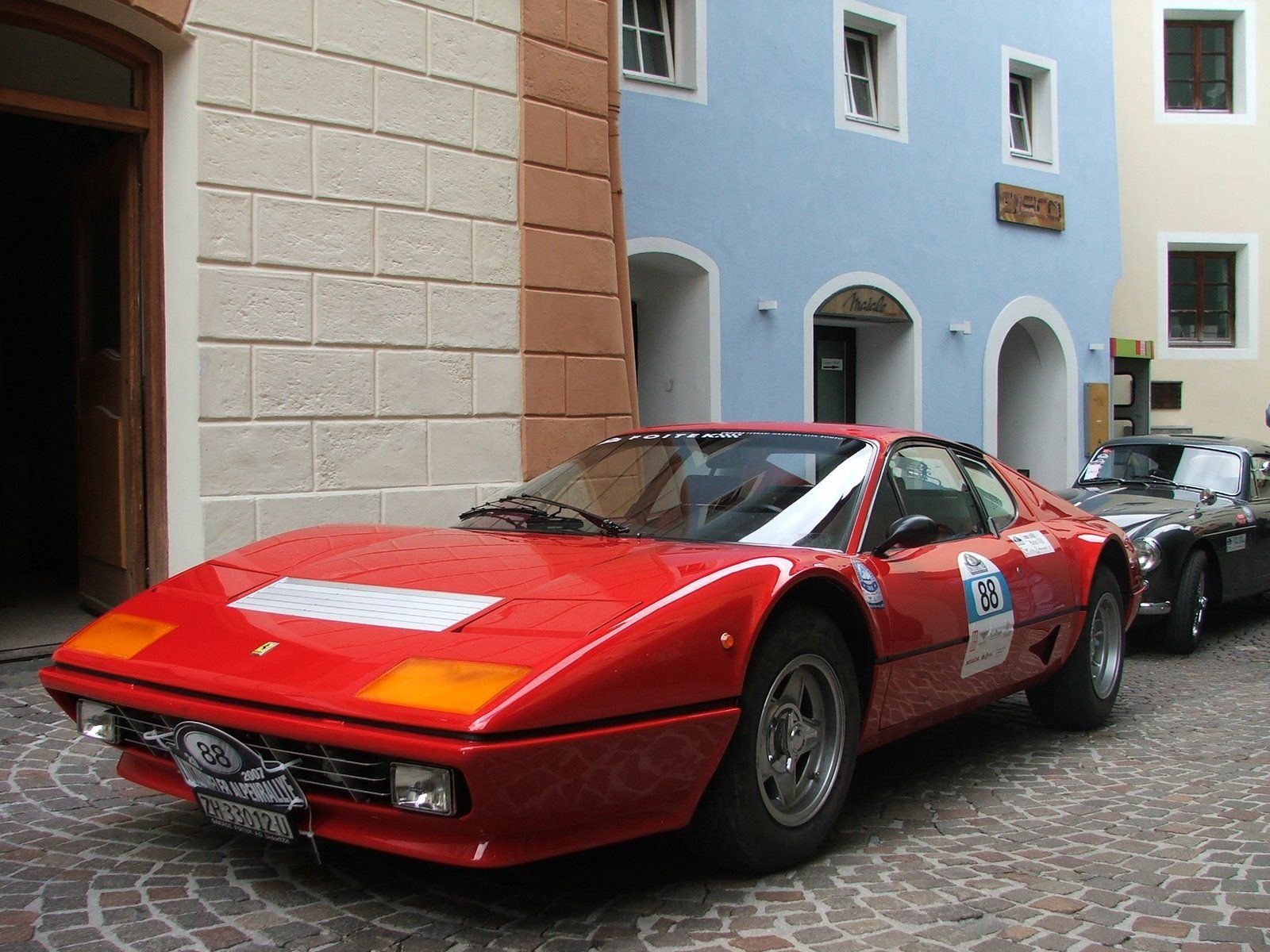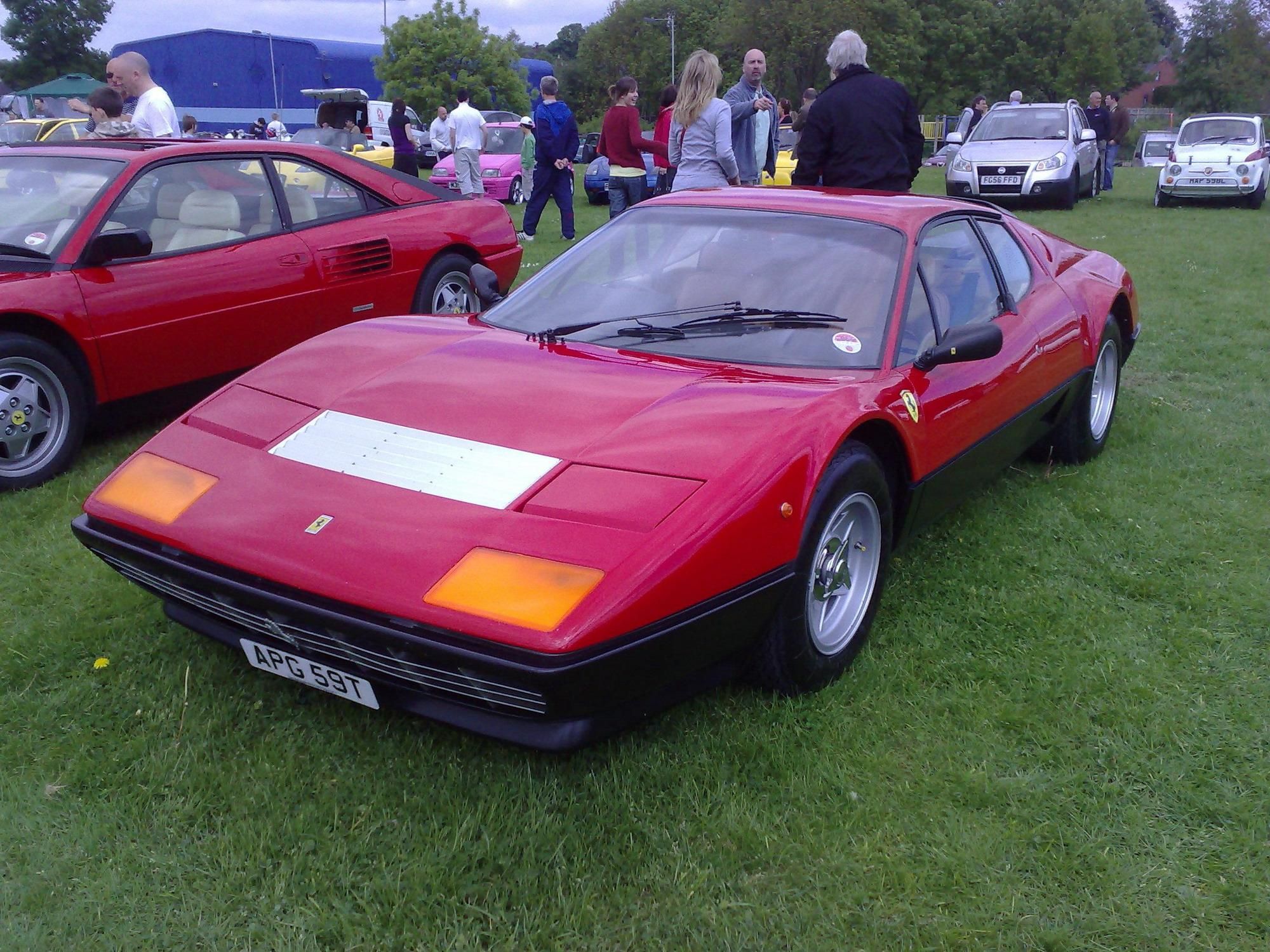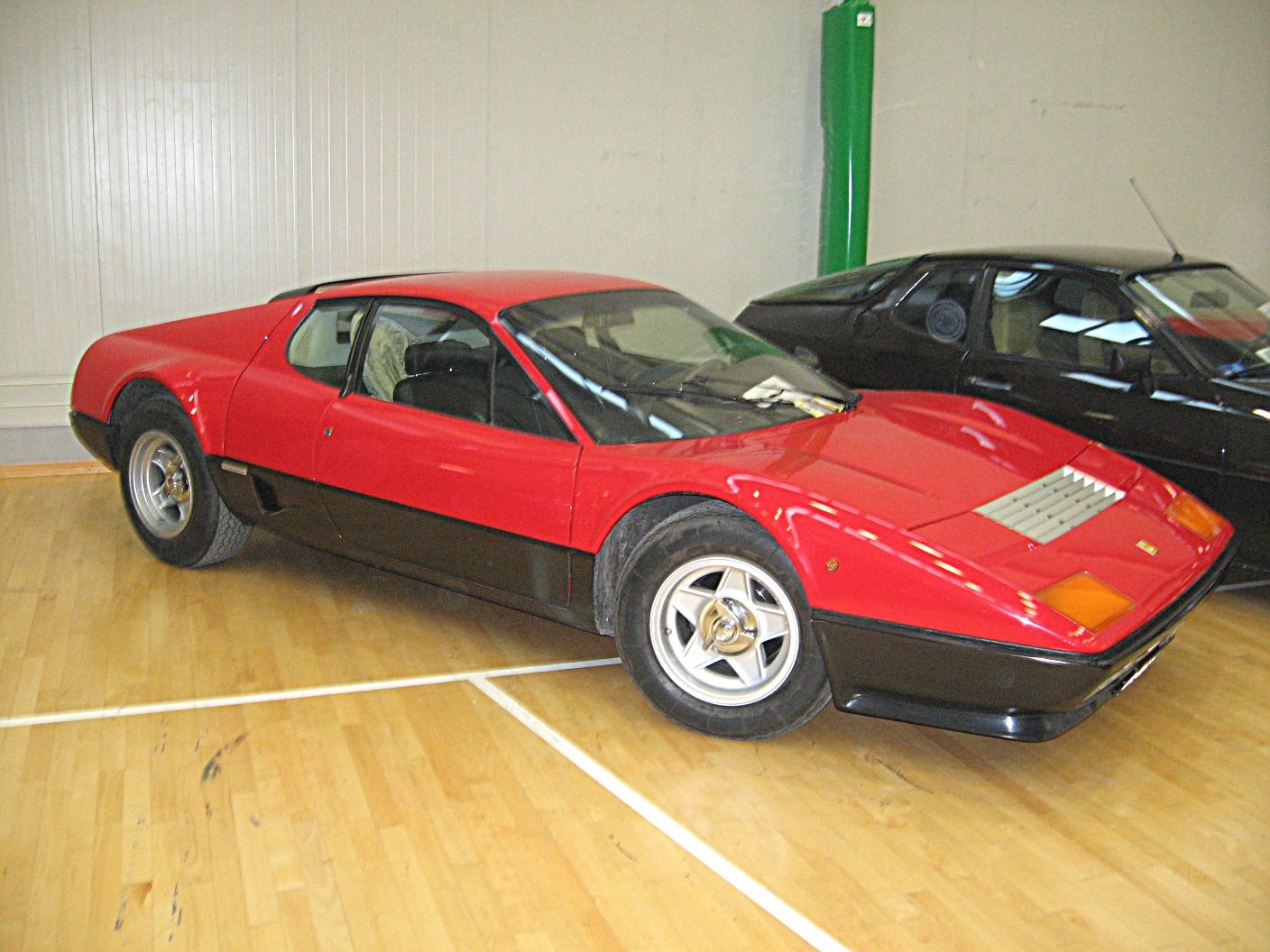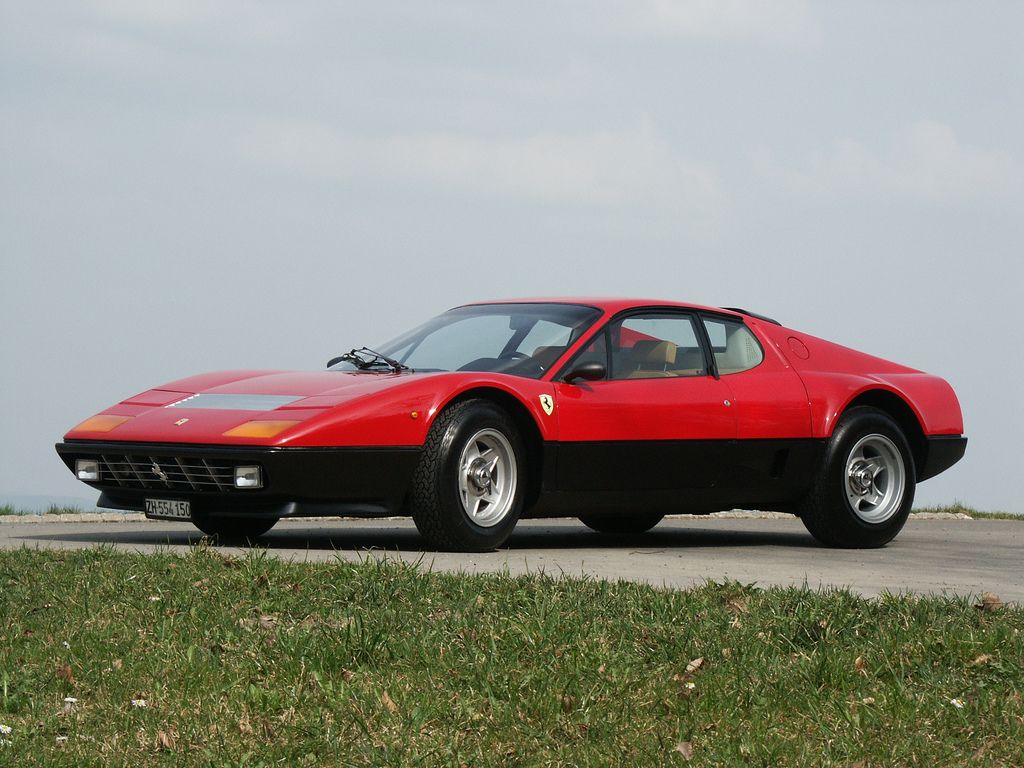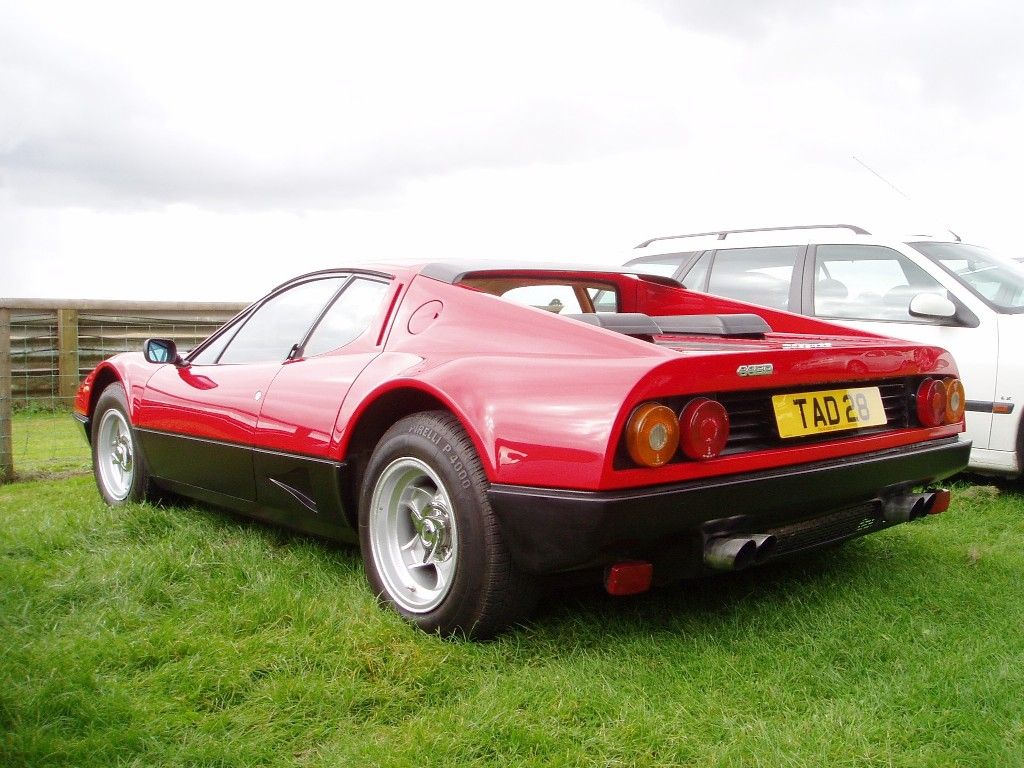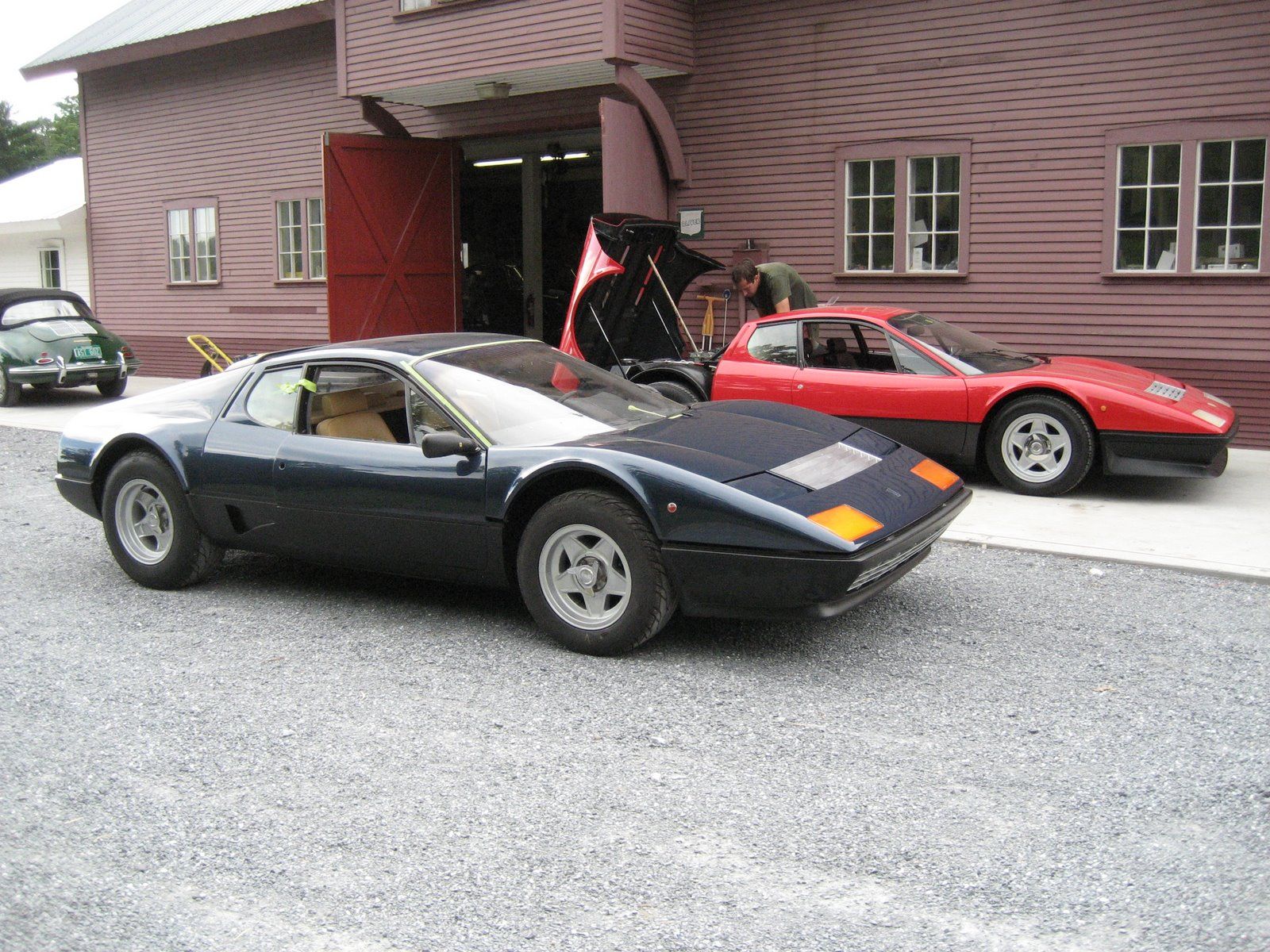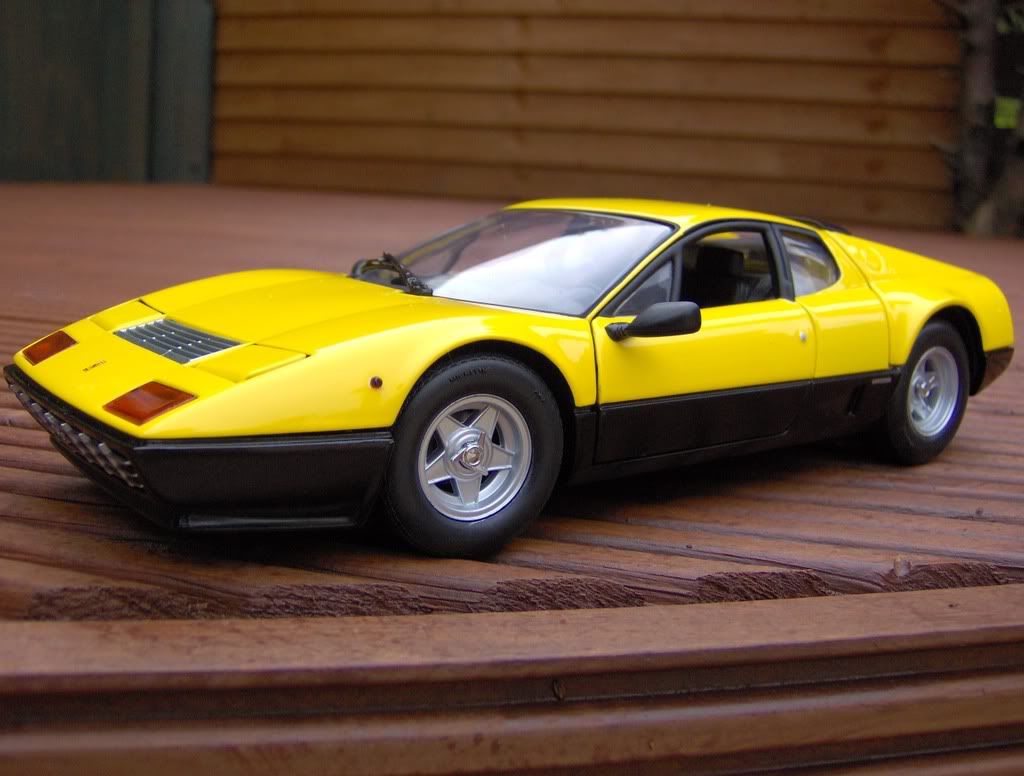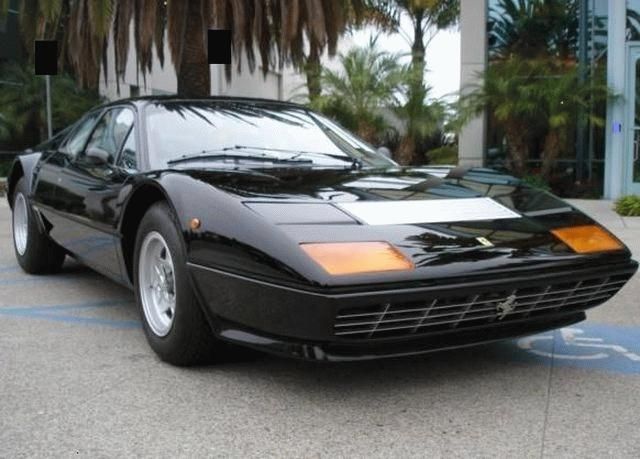The shape is so familiar, so iconic, so quintessentially "Ferrari"->ke252 for enthusiasts who grew up in the 1980s that it's hard to believe that the Ferrari 512BB->ke3524 actually had a bit of a struggle to make it into production. A mid-engine layout is practically standard equipment on modern supercars,->ke177 but Enzo Ferrari wasn’t always sold on the concept for road cars.The opinionated leader of the company believed that the cars would be too difficult for owners to drive safely, in spite of the on-track benefits of the design.
Still, the idea of a roadgoing car that shared the horizontally opposed engines and mid-engine layout of racing Ferraris was too tempting to pass up. The car did go into production, in the end, and the first Berlinetta Boxer hit the streets in 1973 as the 365 GT4 BB. The car was a dramatic departure from Ferrari’s front-engined cars, and effectively set the tone for Ferrari’s most iconic vehicles through the 1990s. In 1976, a round of styling and mechanical updates renamed the car 512 BB. The name change came courtesy of a larger, 5.0-liter 12-cylinder engine and conveniently shared the name with a classic->ke503 Ferrari race car.->ke148
This was adequate, as the 512 BB was a genuine supercar. It offered race-bred dynamics, stunning looks and a top speed of nearly 200 mph. The car got worldwide attention in spite of never being officially imported to North America, and squared off successfully against the world's supercars until 1985, when it was succeeded by the even more extreme Testarossa.->ke2391
1976 - 1981 Ferrari 512 BB
- Make: Array
- Model: 1976 - 1981 Ferrari 512 BB
- [do not use] Vehicle Model: Array
Exterior
The dramatic, low-slung looks of the 365 GT4 BB were carefully tweaked for the evolution to the 512 BB.The biggest changes were under the skin, but a redesigned front spoiler, quad taillights and low-mounted engine cooling ducts ahead of the rear wheels helped to set it apart.Otherwise, Ferrari kept the purposeful dream-car look the same.
With competitors like the Maserati Bora and Lamborghini Countach vying for curbside attention, the 512 BB’s styling remained fitting for Ferrari’s first mid-engine supercar (the Dino GT was technically first, but it was never badged as a Ferrari). The one-piece front and rear sections hinged forward to ensure that the car looked just as exciting when it was being worked on. In some ways, it’s possible that the 512 BB’s styling was too iconic, as it can be mistaken for the later V8-powered 308/328 series cars by careless car spotters.
The 512 BB also sported an updated version of Ferrari’s classic egg-crate grille and a distinctive body line that divided the car top to bottom.These elements became Ferrari hallmarks in later cars.
Exterior Dimensions
|
Length |
4,400 MM (173.22 Inches) |
|
Width |
1,830 MM (72.04 Inches) |
|
Height |
1,120 MM (44.09 Inches) |
|
Wheelbase |
2,500 MM (98.42 Inches) |
|
Front track |
1,500 MM (59.05 Inches) |
|
Rear track |
1,563 MM (61.53 Inches) |
|
Weight |
1,400 KG (3086 LBS) |
Interior
Like the exterior, the 512 BB's interior styling helped to set the tone for Ferrari's supercars for decades afterward.Large, easy-to-read gauges with orange lettering on a black background dominated the dash beyond a three-spoke wheel, and the five-speed manual transmission was controlled via a metal-gated shifter.The seats were low, and the greenhouse narrow.With the engine immediately behind the cabin, the 512 BB offered an unusually intimate connection to the machine.
Drivetrain
The “boxer” part of the 512 BB’s name comes from its horizontally-opposed twelve-cylinder engine.The 5.0 liter powerplant was bored and stroked from the previous 4.4 liter engine and revved slower, but even with the redline dropped from 7000 rpm down to 6200, the 512 BB was actually faster than its predecessor.
Horsepower was approximately 360. A five-speed manual transmission was the only gearbox offered. The 512 BB was one of the first of the modern generation of supercars, boasting a 187-mph top speed and a 0-60 time under six seconds. The512 BB inherited Bosch K-Jetronicelectronic fuel injection from the 512 BB LM racer in 1981, becoming the 512 BBi. Emissions regulations in Europe resulted in a slight power drop, but the 512 BBi still provided a respectable 340 horsepower.
The mid-engine layout provided rapid and precise direction changes, even without power steering.The 512 BB rode on a suspension that featured unequal-length A-arms front and rear.The rear track was widened compared to the 365 GTB4 BB, to improve stability. Handling was considered an improvement by contemporary reviewers.
Drivetrain Specifications
|
Type |
rear, longitudinal 180° V12 |
|
Bore/stroke |
82 x 78 mm |
|
Unitary displacement |
411.92 cc |
|
Total displacement |
4943.04 cc |
|
Compression ratio |
9.2 : 1 |
|
Maximum power |
360 HP @ 6,800 RPM |
|
Power per liter |
73 hp/l |
|
Top speed |
302 KM/H (187 MPH) |
Prices
The 512 BB enjoyed a six-year run from 1976 to 1981, and 929 were produced.The 512 BBi was built from 1981 to 1984, and saw just over 1000 units leave the factory.With low production and an important role in Ferrari's history, the 512 BB has carried reasonably high values for a malaise-era car, even considering its pedigree. A 1978 512 BB sold for $467,500 at Monterey in 2015.
Competition
Lamborghini Countach
The arguable king of the Italian exotics haunted the dreams (and hung on the walls) of enthusiasts for decades.The V-12 powered Countach instantly claimed the crown of most extreme, and held on to it into the 1990s.
Read our full review on the Lamborghini Countach here.
DeTomaso Pantera
The combination of exotic styling, a mid-engine layout and a simple American V8 sourced from Ford made the Pantera an attractive beast capable of serious performance. This joint venture between Ford and DeTomasoalso had the advantage of undercutting the other Italians on price.
Read our full review on the DeTomaso Pantera here.
Conclusion
Appearing as it did between icons in Ferrari’s history (the Daytona and the Testarossa), the 512 BB has been underappreciated at best.It was, however, one of the first genuine mid-engine supercars, and as such it ushered in an era and reshaped the dreams of car guys forever.


